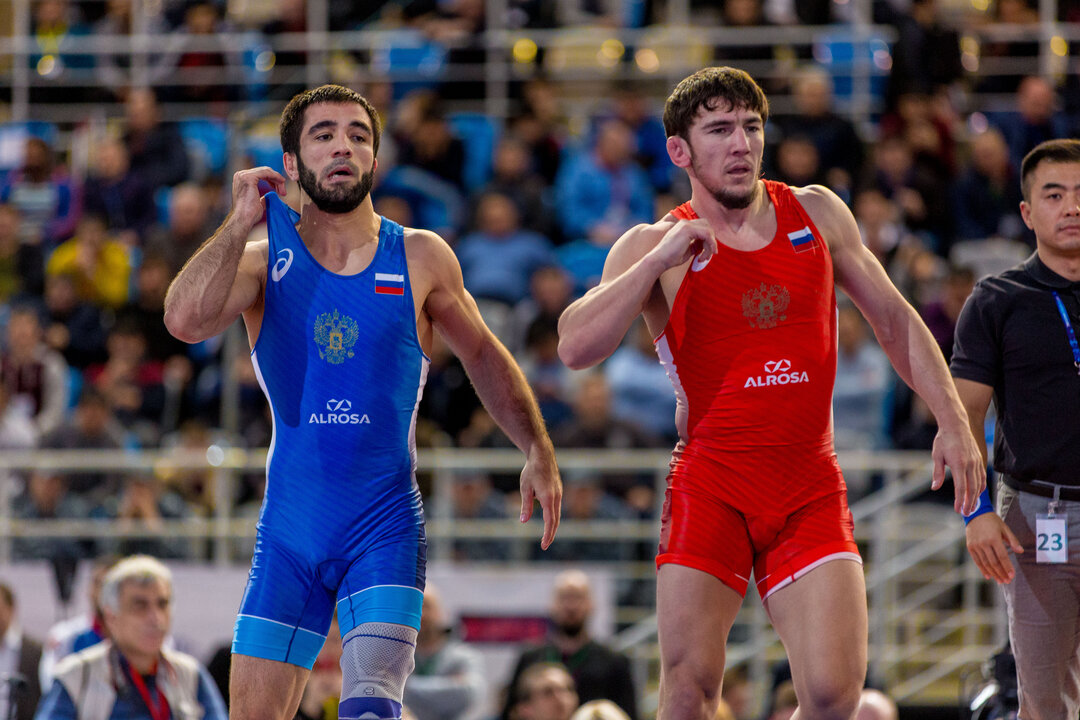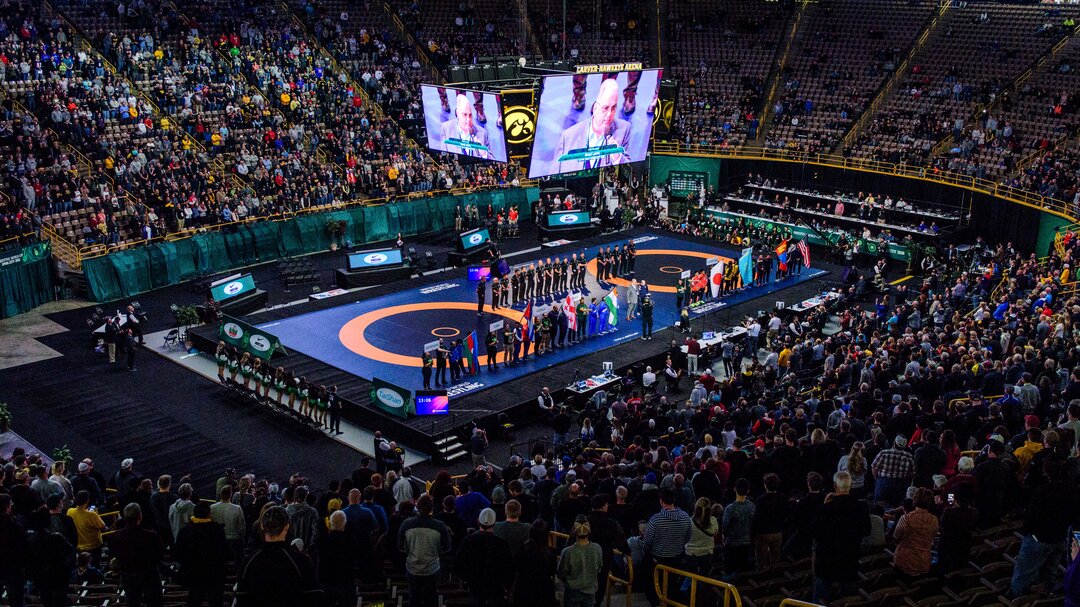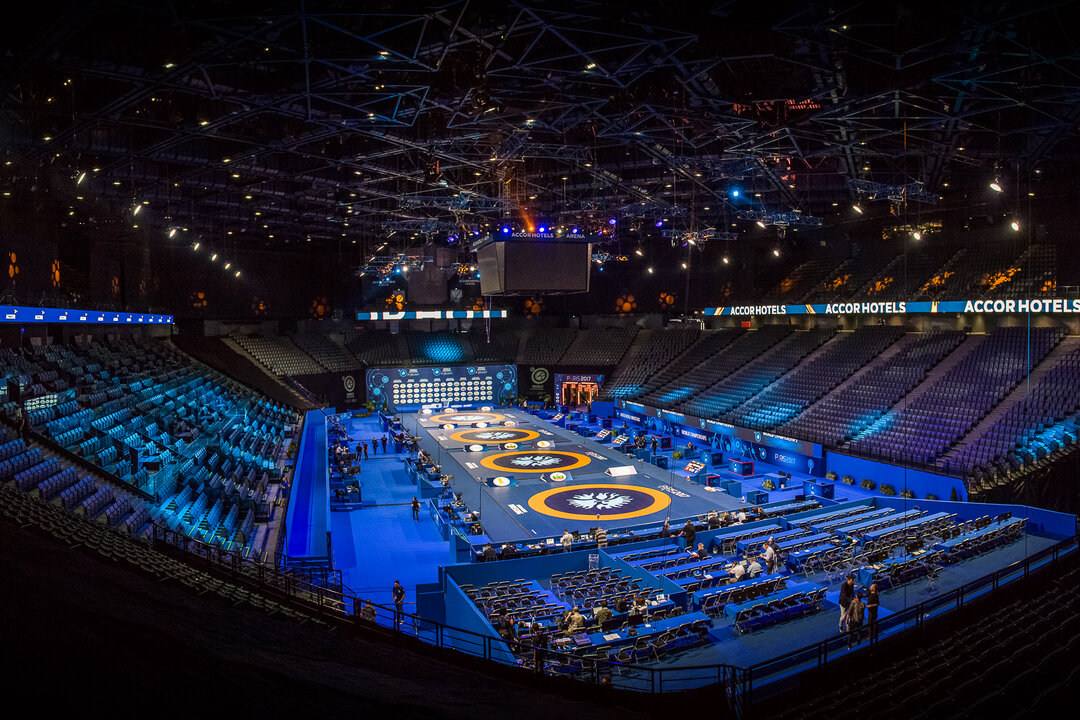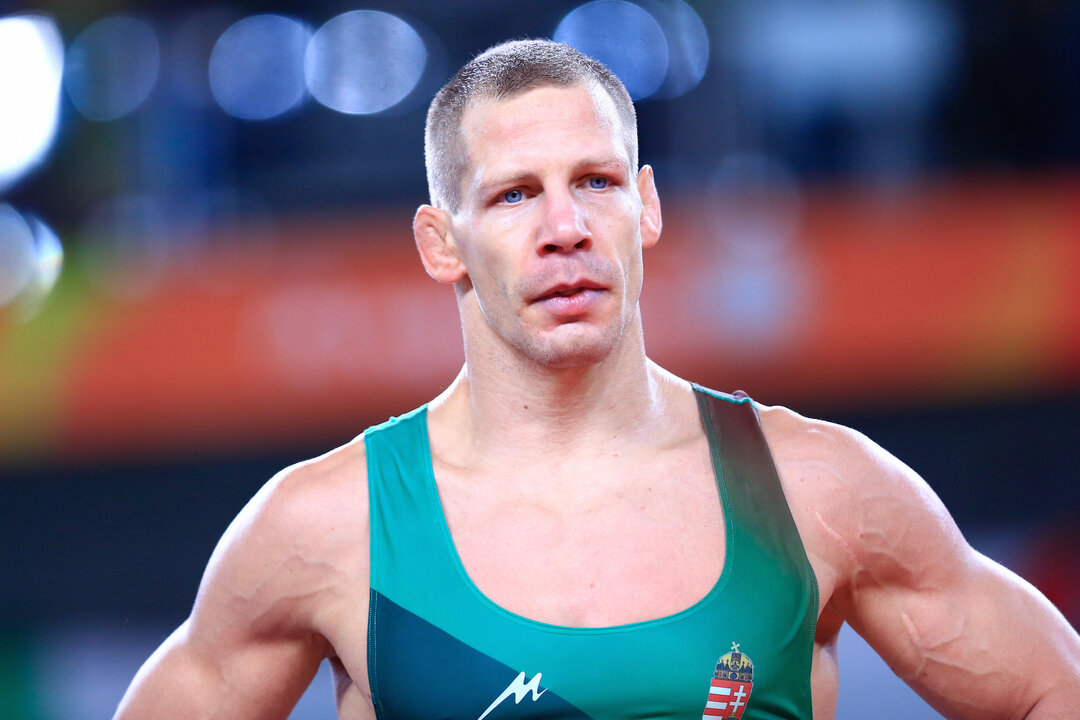Weekly FIVE! August 27, 2018
Monday, August 27, 2018 - 12:56 By Eric Olanowski

Reviewing The Beach Wrestling World Series, new standardized calendar and tournament regulations. Also looking at the final women's wrestling Ranking Series event of the year, the Poland Open.
1. Wrestling Announces Creation of Beach Wrestling World Series
United World Wrestling, the international governing body for the sport of wrestling, has announced details behind The Beach Wrestling World Series.
Senior-level competitions will be comprised of eight weight categories divided equally amongst men and women. The four men’s weight classes are 70kg, 80kg, 90kg, and +90kg, and the four women’s weight classes are 50kg, 60kg, 70kg, and +70kg.
Beach Wrestling matches will consist of a single three-minute period and will only practice the standing position where the use of the legs are allowed in all actions.
The first athlete to three (3) points wins the match.
Click HERE to read the full story.
 df. CHAKAEV (RUS) -by VPO1, 3 - 3-3.jpg) Ilyas BEKBULATOV (RUS) defeated Akhmed CHAKAEV (RUS), 3-3 at the 2018 Ivan Yarygin. (Photo by Max Rose-Fyne)
Ilyas BEKBULATOV (RUS) defeated Akhmed CHAKAEV (RUS), 3-3 at the 2018 Ivan Yarygin. (Photo by Max Rose-Fyne)
2. Poland to Host Final Women's Wrestling Ranking Series Event Begining September 7
Warsaw, Poland will host the fourth and final women's wrestling Ranking Event of the year, the Poland Open on September 7-9.
Though the tournament is a women's wrestling Ranking Series event, the freestyle portion of the event will also hold significance as Russia's two final freestyle World Team spots will be up for grabs. The two remaining weight classes that have not been cemented are 61kg and 65kg.
Gadshimurad RASHIDOV (RUS) (61kg) and Ilyas BEKBULATOV (RUS) (65kg) were relieved from participating at Russian Nationals and will compete alongside Russian National champions Magomedrasul IDRISOV (RUS) (61kg) and Akhmed CHAKAEV (RUS) (65kg) at the Poland Open.
The highest placer in these two weight classes at the Ziolkowski (Poland Open) will represent Russia at the 2018 World Championships.
 The 2018 World Cup at Carver-Hawkeye Arena. (Photo by Tony Rotundo/WrestersAreWarriors.com)
The 2018 World Cup at Carver-Hawkeye Arena. (Photo by Tony Rotundo/WrestersAreWarriors.com)
3. Bureau Tightens Tournament Regulations, 'Pushout' Interpretation
United World Wrestling held a meeting of its bureau last month during the Junior European Championships in Rome.
The Bureau discussed several topics around the operation of United World Wrestling including participation in championships, late registrations, obligations of team leaders, obligations of inspectors and updated World Cup regulations. The members also passed a stricter enforcement of the ‘pushout’ rule to promote the use of technical actions on the edge of the competition surface.
Click here for a summary of what was discussed around each topic.
 View of AccorHotels Arena in Paris, France. The host site for the 2017 World Championships (Photo by Tony Rotundo/WrestersAreWarriors.com)
View of AccorHotels Arena in Paris, France. The host site for the 2017 World Championships (Photo by Tony Rotundo/WrestersAreWarriors.com)
4. Wrestling Body Approves Standardized Competition Calendar
United World Wrestling’s Executive Committee recently approved a proposed standard yearly calendar. The approval came upon request from many National Wrestling Federations to have the International Calendar fixed earlier.
Click HERE to view the dates that were approved by the Executive Committee.
 (1).jpg) Peter BACSI (HUN), 2014 world champion.Photo by Gabor Martin.
Peter BACSI (HUN), 2014 world champion.Photo by Gabor Martin.
5. Bacsi Leads Hungary to Three German Grand Prix Golds
With only 53 calendar days left until the 2018 World Championships kick off in Budapest, Hungary, most countries have either finalized or are in the final stages of completing their World Championship rosters.
Considering the number of Hungarian hammers that were entered into last weekend’s Grand Prix of Germany, one can only imagine that Hungary is still looking to cement their rosters and has plans of using this tournament as one of the final deciding factors for their Greco-Roman squad.
Overall, Hungary had three of the possible ten champions. Most importantly, in two of those weight classes, wrestlers from Hungary met each other for the gold medal.
The most important all-Hungary finals match-up came at 77kg where Zoltan LEVAI (HUN) knocked off three-time world and Olympic medalist, Tamas LORINCZ (HUN), 1-1 for the gold medal.
If Hungary was to select Levai over Lorincz, this would be the first time Tamas has missed out on making a World or Olympic team since stepping onto the senior level in 2006.
Peter BACSI (HUN) and Eric TORBA (HUN) were the two final Hungarian champions.
Click HERE for full review and results.
Weekly FIVE! In Social Media
1. Big Move Monday !
@helen_maroulis @usawrestling
#wrestlelikeagirl
2. Sunday smiles ? with @sadulaev_abdulrashid and @akhmed_gadzhimagomedov_sh.
3. Anything is possible when you get your hands locked and come up to your feet on your shots
.
.
.
#womenswrestling #wrestlelikeagirl#wrestle #olympicwrestling #wrestling#justwrestle #uww
4. Transitioning into the weekend like...
5. “@kyledake444 lifts and propels him into the air for the four point throw!”


 Women's Wrestling at the 2004 Athens Olympic Games. (Photo: United World Wrestling / Martin Gabor)
Women's Wrestling at the 2004 Athens Olympic Games. (Photo: United World Wrestling / Martin Gabor) Tayla FORD (NZL) is the first wrestler from New Zealand who will compete at the Olympics. (Photo: United World Wrestling / Amirreza Aliasgari)
Tayla FORD (NZL) is the first wrestler from New Zealand who will compete at the Olympics. (Photo: United World Wrestling / Amirreza Aliasgari)
Share your thoughts.
Comments